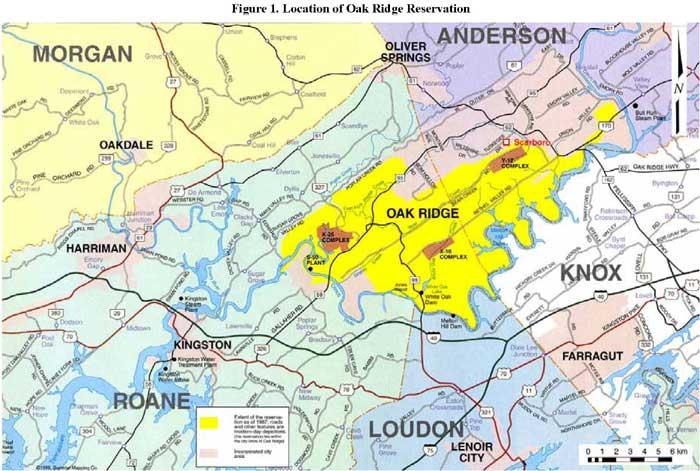The Oak Ridge Reservation is poised to undergo a significant ecological restoration project valued at $42 million, aiming to revitalize its natural habitats while addressing environmental concerns. This ambitious effort seeks to balance preservation with sustainable development, reflecting broader commitments to environmental stewardship in the region. As local stakeholders and environmental experts prepare to implement the plan, the project promises to set a new standard for ecological restoration within historically sensitive and industrially impacted areas.
Oak Ridge Reservation Launches Major Ecological Restoration Initiative
The Oak Ridge Reservation is embarking on a transformative ecological restoration journey with a robust investment of $42 million. This initiative aims to revitalize native habitats, enhance biodiversity, and address decades of environmental impact resulting from historical industrial activities. Key areas within the reservation will undergo soil remediation, wetland revitalization, and stream restoration to foster a balanced ecosystem that supports local wildlife and plant species.
Core components of the project include:
- Native species planting: Introduction of over 50 species of trees, shrubs, and grasses to restore natural forest and meadow landscapes.
- Water quality improvements: Installation of biofilters and restoration of natural flow patterns to safeguard aquatic habitats.
- Community engagement: Educational programs and volunteer opportunities to encourage stewardship and awareness.
| Restoration Focus | Planned Actions | Expected Outcome |
|---|---|---|
| Soil Health | Organic amendments and erosion control | Improved soil fertility and structure |
| Wetlands | Re-contouring and native plant installation | Enhanced water filtration and flood mitigation |
| Streams | Bank stabilization and debris removal | Increased habitat diversity and fish populations |
Balancing Environmental Recovery with Community and Industrial Needs
The $42 million ecological restoration project at Oak Ridge Reservation marks a pivotal step toward healing the land while respecting the diverse interests of local communities and industries. Striking this delicate balance involves rigorous environmental assessments paired with transparent dialogues among stakeholders. Restoration efforts include replanting native species, improving water quality, and removing invasive flora-actions designed not only to revive ecosystems but also to sustain the economic vitality fueled by ongoing industrial operations in the region.
Project leaders have outlined a multifaceted approach that embraces the following priorities:
- Community engagement: Ensuring residents have a voice in decision-making processes to preserve cultural heritage and recreational spaces.
- Sustainable development: Integrating eco-friendly technologies that minimize industrial footprint without compromising productivity.
- Monitoring and transparency: Ongoing evaluation of environmental progress with public reporting to maintain accountability.
| Focal Area | Key Action | Expected Benefit |
|---|---|---|
| Wetland Rehabilitation | Restoration of native vegetation | Improved biodiversity & flood control |
| Industrial Site Management | Reduced emissions & waste controls | Cleaner air & reduced contamination |
| Community Partnerships | Local workshops & collaborative planning | Enhanced social cohesion & job opportunities |
Experts Recommend Sustainable Practices to Ensure Long-Term Habitat Health
Leading ecologists emphasize that the success of the $42 million restoration initiative hinges on the integration of sustainable practices tailored to the unique ecosystems within Oak Ridge Reservation. Among the strategies proposed are controlled burns to mimic natural fire cycles, native species reintroduction to restore biodiversity, and careful water management to protect fragile wetlands. Experts highlight that these measures not only nurture the current wildlife populations but also build resilience against the increasing threats of climate change and human encroachment.
Key sustainable practices underscored by specialists include:
- Adaptive management approaches that monitor and adjust restoration efforts in real-time
- Use of eco-friendly materials and techniques in trail and facility upkeep
- Community engagement programs to foster stewardship and education
- Ongoing scientific research partnerships to inform and improve restoration methods
| Practice | Expected Ecological Benefit |
|---|---|
| Controlled Burns | Reduction of invasive species, nutrient recycling |
| Native Plantings | Habitat restoration, increased pollinator populations |
| Wetland Protection | Improved water quality, flood mitigation |
| Community Involvement | Enhanced public awareness, long-term preservation |
Insights and Conclusions
As Oak Ridge Reservation embarks on its $42 million ecological restoration project, the initiative reflects a significant step toward balancing environmental stewardship with the region’s historical and scientific significance. Stakeholders remain hopeful that these efforts will not only revitalize the area’s natural habitats but also serve as a model for sustainable restoration practices nationwide. The coming months will be critical in observing how this ambitious plan unfolds and how effectively it harmonizes the goals of conservation, public access, and cultural preservation.
